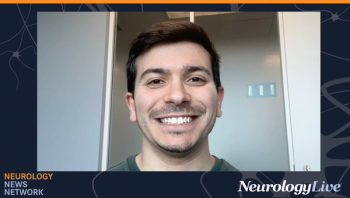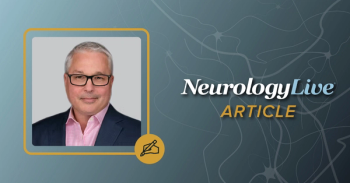
The State of Stroke Care: Adjusting to COVID-19 and Recent Research
The director of the Stroke Center at Banner-University Medicine Neuroscience Institute discussed the possible link between COVID-19 and stroke and offered an update on recent research in the stroke care landscape.
Jeremy Payne, MD, PhD
The COVID-19 pandemic has impacted medical care across the spectrum, but in recent weeks, the stroke care field has found itself in a somewhat unique position. New
Additionally, with a number of medical meetings foregoing their usual plans and either canceling or shifting to a virtual model, research in stroke unrelated to the virus has not had its time in the spotlight. With so much happening so quickly, stroke care specialists are left to wonder about a potential connection to the virus, all while trying to remain up to date on the latest research that may or may not have been presented at meetings like the International Stroke Conference (ISC).
To find out more about this possible link between stroke and COVID-19, as well as the latest literature that’s been published, NeurologyLive reached out to Jeremy Payne, MD, PhD, director, Stroke Center, Banner-University Medicine Neuroscience Institute. Payne shared his perspective on the ongoing situation and highlighted the current state of care in stroke.
NeurologyLive: In recent weeks there have been a number of case-based reports published on the possible association between COVID-19 and stroke. What are your thoughts on those data based on what is known now?
Jeremy Payne, MD, PhD: It's difficult work, and it's difficult to wrap our heads around that in this short period of time—and that, in a large part, gets back to the conversation we'll often have with our patients with stroke and their families that there's almost never a smoking gun with stroke. It's a multifactorial disease—in most cases, it’s the result of just wear and tear on the vasculature and the blood clotting system and the structures that support blood supply to the brain, which we talk about in terms of risk factors. Blood pressure, diabetes, cholesterol, smoking, and then things that are very hard to wrap our brains around, like your genetics. We'll often find a spectrum of potential contributors to somebody stroke but finding an actual smoking gun isn't usually how that works. We do certainly find smoking guns, but mostly its risks that we manage, so it's a little early in our experience with stroke and COVID to clearly say, “Yes, it’s a risk for stroke,” but it's certainly bubbling up. And certainly, the little hints we've had here and there are quite compelling.
For example, we see that some people tend to have abnormal markers of blood clotting when they have COVID—stroke or not. We'll see, for example, that that the things that we see in their lungs may not be typical or traditional pulmonary disease but may actually have to do with clots forming in the small arteries, and maybe that's what's happening in their kidneys. Now, we've taken to looking at sort of the clotting profile of patients we've seen recently with stroke and COVID, and we're finding it's quite abnormal. We're finding that not only the numbers are abnormal, but patients clinically seem to respond better to earlier use of blood-thinning medications and sometimes even clot buster medicines to clear up some of these clotting issues that we'll see.
How that all shakes out, I think, is going to be very interesting and is actually going to teach us some important lessons about how blood clotting works and how vascular biology works. There are things to be learned there. I think, though, where we are currently with what we know and what we've seen, it's all been new and it's hard to know exactly whether we're seeing something specific. For example, this COVID virus seems to have an affinity for certain proteins that have something to do with controlling blood pressure in the vasculature. Is that something that might be driving this, or perhaps is it analogous to what we may, say, see during flu season, which is having a systemic inflammatory process like the flu? Or even, for example, rheumatoid arthritis—we see more strokes in those patients, again, because there's this systemic inflammatory response which tends to promote blood clots. All of that is very, very compelling.
Most of us, me included, haven't really seen enough yet to feel like we have our finger on that pulse. I think the folks, such as our colleagues in the New York area who have seen enough, I think they're just trying to survive for the wave, and just trying to keep their heads above water while trying to do science. It's going to take the better part of a year for us to learn those lessons about how this virus really seems to be causing what seems to be strokes that we wouldn't otherwise expect.
Outside of COVID-related research, has anything caught your eye in the past couple of months in stroke research and development?
One of the potentially compelling things that was perhaps missed in these last couple months has been the idea that our main clot buster medicine, tissue plasminogen activator (TPA), may have a competitor on its hands with 1 of its cousins, TNK-TPA—tenecteplase—which would address a lot of issues we have with that clot buster medicine. Not so much the efficacy of it, that TPA clot buster medicine is a very effective drug, but it's a little tricky to use in the sense that we have to deliver it over an hour as a drip. That complicates transports—we can't just have a paramedic transport, a nurse needs to supervise that, so it makes it a little harder to deliver the drug. And, there's some concerns that it may have more bleeding risk than the tenecteplase.
Tenecteplase is a single bolus, it may have a more favorable safety profile—it would certainly simplify things. It's now part of our guidelines as an optional alternative, and it's something that we have spent a lot of time thinking about deploying but, of course, everybody's lost their mind in the last 2 months and those plans are on hold. That's quite compelling.
In the meantime, that the science that a lot of us have been thinking about still revolves around catheter-based stroke therapies. We had some really important results in 2015, and that's really caused that area of our care to blossom, but we still have not fully deployed all of what we need in order to develop systems of care around the bigger stroke centers and understanding who needs what nuance of therapy, should we use clot buster medicines, what sort of catheter, in what timeframes, how do we use advanced imaging to better select patients, etc.? A lot of that work is ongoing, and in my mind, as the medical director of a big stroke program, it is still one of the most important areas for us to evolve. But nobody's talking about that at the moment, it's just off.
There hasn’t been anything radical that we've learned recently about stroke prevention and medical treatment of stroke, but I am struck year after year with just how much more refined our understanding of things in that realm have become in recent years. Blood pressure, for example. We've spent a lot of time discussing targets for blood pressure, how to manage blood pressure meds and things. We still are doing a lousy job of that, in general, we have more therapeutics available than we ever have and a better understanding than we ever have, so I would like to take the opportunity during Stroke Awareness Month to remind people to check your blood pressures at home.
I think we're in a good position to do stroke preventive work. We think that 80% of strokes don’t need to happen if we are only able to get after people ahead of time. One of the big challenges for us moving forward is we suspect that our need to isolate and distance is not really going to go away anytime soon. This is going to be the norm for a little while, or at least some flavor of that, so I would encourage people to continue to try to get their health care, to make sure we're not just put pressing pause on all of the important management with medicines, and management with behavior and diet and exercise strategies.
Transcript edited for clarity.
Newsletter
Keep your finger on the pulse of neurology—subscribe to NeurologyLive for expert interviews, new data, and breakthrough treatment updates.



























